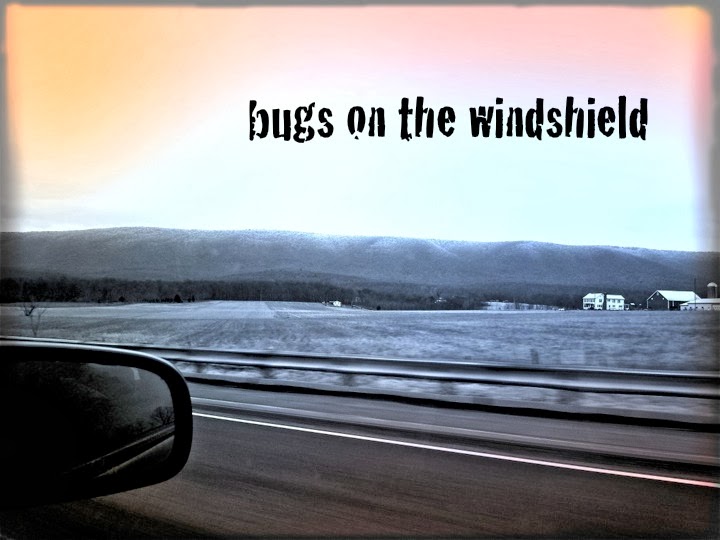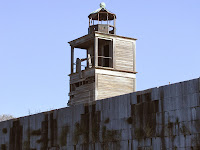"Sound of Lights" Part 2
It had
been a full weekend in New England. A river on fire, on purpose, in Providence.
Soul Asylum and Fountains of Wayne at the Paradise Rock Club in Boston. I day away from the Northeast
corridor fury on Block Island. But now it was time to head home.
The
system of interstates connecting me to the western frontier of the Keystone
State can be nerve-racking, boring, and never ending--all at once. The trick is
to break up the trip. The question is how to do so. For me the "how"
is easy, especially when traveling along a large body of water like Long Island
Sound. I had already mapped out about a dozen Lighthouses to stop and see. I
whittled that list down by half, to those that seemed the most interesting and
spent the least of my budgeted travel time.
I re-gathered
my travel gear and thanked my host for a great time, made my way out of the
living history book that is Providence, and headed toward my first destination
on Rhode Island’s southern coast.
 |
| Watch Hill neighborhood |
I got
all the way to the Connecticut border before exiting I-95, backtracking to 1-A
and winding my way south to the little town of Watch
Hill.
Following
the virtual directions given, I dutifully parked outside of a very exclusive
neighborhood and follow the path through it, beyond it, and to the end of Lighthouse
Road.
As I
looked back from the flashing light, I felt I had found the place where rich
people go to.. Huge, beautiful homes overlooked gently breaking waves and the
classic lighthouse. For my money the setting is one of the most impressive on
the East Coast, although my money could only afford a short visit to this
provincial paradise. Even an overnight stay at the stately Ocean
House Resort is
beyond most of our means.
 |
| Ocean House Resort |
I
lingered a while longer than planned, taking pictures of both the
lighthouse and the estates it guarded. I finally left, collecting my bearings
for my second stop.
 |
| Watch Hill Lighthouse |
Stonington
Harbor is only about a few miles from Watch Hill, as the seagull flies. Not
being a seagull, I had to ramble in the mini on a 12-mile series of back roads
and byways.
 |
| Latimer Reef Light |
The little
town is quite pedestrian, compared to the haven I left 30 minutes before. The
town of under 20,000 is quaint and comprised of two main streets—one in and one
out. All one needs to do is follow to the end of the main artery to find the
town’s lighthouse. It was a bonus to also discover a nice view of the Latimer
Reef Light, lying just inside the water’s imaginary boarder of New York. I had
seen this light from afar while in Watch Hill and was hoping for a closer view.
 |
| Stonington Harbor Lighthouse |
The
Stonington Harbor Lighthouse is a solid stone structure that serves as a dual
purpose museum, also highlighting both local primitive objects. The view from
the empty beacon is nice, but the thought of another out of service lighthouse
is a bit sad.
Even though
there are no lighthouses to speak of in Mystic Harbor, I felt I should stop.
The town is the definition of charming, and my roadside stop crab cakes were a
treat. The New England Aquarium
is also located just of the Mystic exit of I-95, and I enjoyed a brief visit
with the attraction’s playful beluga whales.
As the day
was beginning to wear thin, I condensed my visit in Mystic in order to get to
my last stop before heading out of New England.
Five Mile
Point Light is a classic structure that marks the mouth of the harbor fed by
the Mills and Quinnipiac Rivers. When viewed from the outcrop of Lighthouse
Point Park, New Haven shines brightly beyond. Turning around, I enjoyed my last
trophy of the day—a “sparkplug” type edifice named the Southwest Ledge
Light.
 |
| Five Mile Point Lighthouse |
 |
| Southwest Ledge Light |
As the day
began to fade into dusk, I knew I had to move on. I was staying with friends in
Matamoras, so I only had a few hours to go. That was until I was led by my
otherwise faultless GPS through rush hour New Haven. Still, the aggravation of
that last leg was well worth the day!
Next Week: Holidays mean staying home! See you after New Year's with an "Rock Music Pioneer" you may never have heard of--but should know...

















